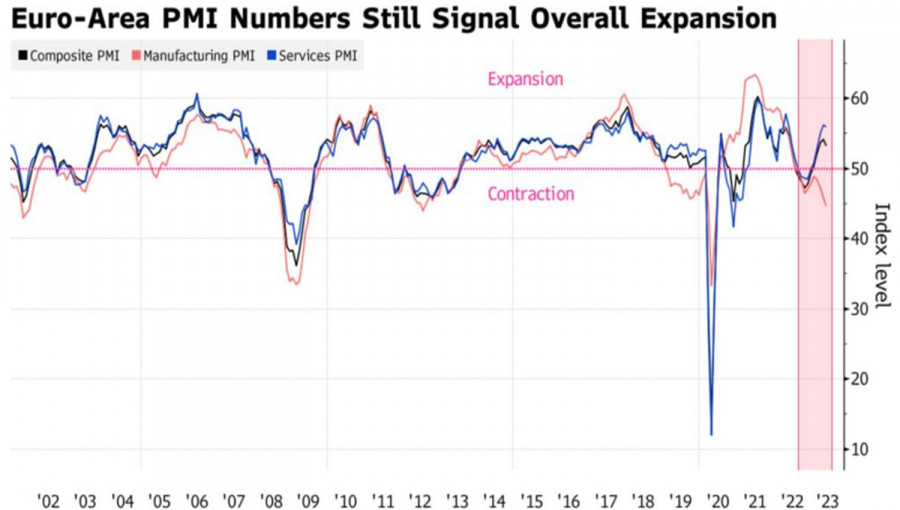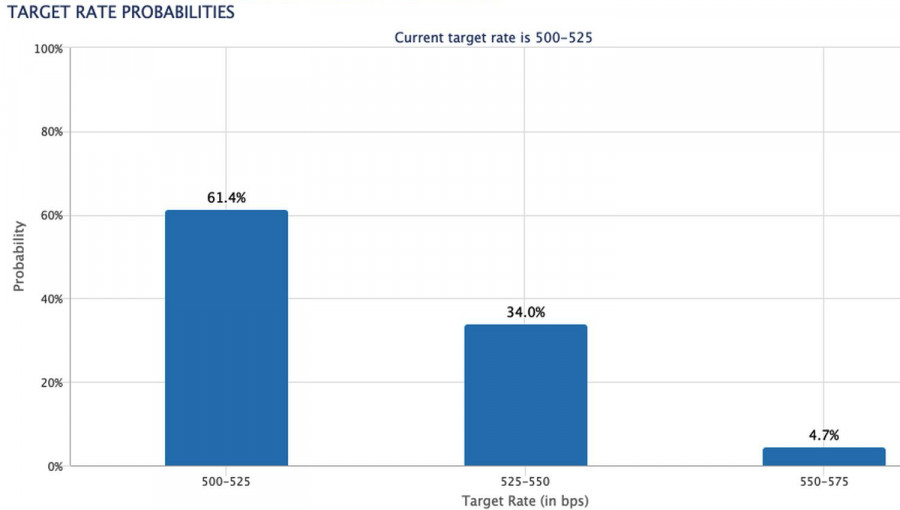The euro can be both pleasant and unpleasant. It rises, reaching yearly highs against the US dollar, and then falls sharply, reigniting concerns about the return of EUR/USD to parity. Such is life in Forex. Peaks are followed by valleys. Bottoms are replaced by new highs. These movements are driven by disappointments and pleasant surprises. In May, the main currency pair encountered a rough patch.
The most significant decline in European PMI in the manufacturing sector since factories were shut down three years ago due to the pandemic hit EUR/USD like a bucket of cold water. The purchasing managers' index dropped to 44.6. Its dynamics cast doubt on the European Commission's forecast of a 0.4% GDP growth for the currency bloc in the second quarter.
The dynamics of the eurozone PMI

Unfortunately, the alarming signals coming from Germany have been confirmed. The economy is disappointing, casting doubt on the recovery of the upward trend in EUR/USD. It couldn't get any worse. The trend could even reverse. Indeed, if in April it was said that only the US economy was heading towards a recession, now the Eurozone is facing the same problem. Add to that the sluggish recovery of China, and the situation begins to resemble global stagflation. Inflation remains high while economic growth is rapidly slowing down. Is it time to flock to the US dollar?
That's exactly what investors are doing. And the "bears" on EUR/USD should thank not the impasse of the debt ceiling, but the "hawks" at the Federal Reserve and the worsening condition of the European economy. After Jerome Powell and his colleagues spoke, the market is increasingly convinced that the central bank will pause the process of tightening monetary policy in June and then resume the cycle in July. The chances of a rate hike in mid-summer have jumped to 39%.
Chances of the Federal Reserve maintaining or changing rates in July

Thus, the European economy is disappointing, while the American economy proves to be more resilient to the most aggressive monetary tightening by the Federal Reserve in decades. As a result, the European Central Bank may slow down the rate hike process for deposits, while their counterparts in Washington are capable of raising borrowing costs even higher. Just in April, the market was confident in the end of the cycle and openly discussed a "dovish" reversal! How quickly the scenery changes in Forex! Should we be surprised by talks of a break in the upward trend in EUR/USD?

Technically, this is confirmed by the formation of the reversal pattern "Spurt and Reversal with Acceleration". The trend line of the Initial Stage has been broken, indicating the seriousness of the "bears'" intentions. If the main currency pair doesn't find the strength to return to the fair value range of 1.0865-1.1085 in the near future, the risks of a sharp change in the upward trend will increase significantly.
In such conditions, it is advisable to adhere to a strategy of building short positions on EUR/USD from levels of 1.101 and below. The target levels are set at 1.066 and 1.053.
The material has been provided by InstaForex Company - www.instaforex.comfrom Forex analysis review https://ift.tt/XyKvm0k
via IFTTT
